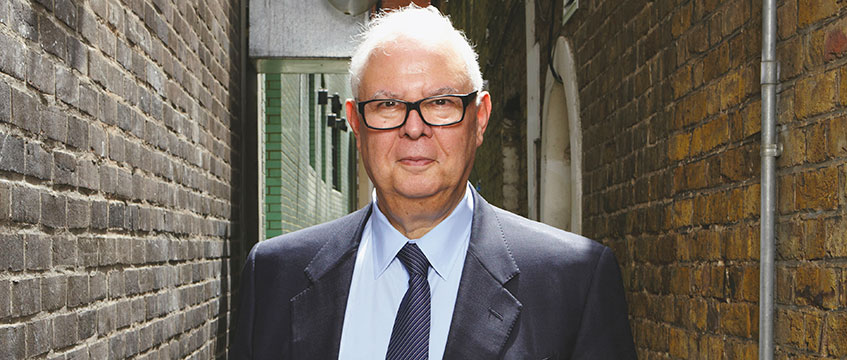Concierge staff offering health and fashion tips, a lecture theatre which might host inspiring TED talks, a library, members club, bike workshop and lounge-like office fit-outs with winter gardens and flexible spaces to make tenants feel happier and healthier. That and 400,000 sq ft of extra office space.
All these are at the heart of Sir Stuart Lipton’s rethinking of the Pinnacle, EC2, now known as 22 Bishopsgate, and unveiled this week.
The veteran developer plans to turn the troubled scheme, once a symbol of the financial crisis in the City, into this cycle’s success story, putting people, productivity and wellbeing at the heart of the Square Mile’s tallest tower.
As a testament to this focus, the building will be the first in London to adopt the new Delos WELL Building Standard, which Lipton believes will set a new benchmark for future developments in the City.
“We are in an era when people are more important than buildings,” says Lipton. “We have had BREEAM for buildings as though buildings were more important than people… What we are trying to do is reflect everyday life, and buildings don’t do that. Buildings should be the servants and not the enforcers.”
All developers of future projects of scale will need to adapt radically in the future to the day-to-day wants and needs of the workforce of the tenants they want to attract if they are to be successful, according to Lipton.
“This building is designed for people. It is not that the others weren’t, but in an era when ever-increasing density has become the prime requirement of occupiers, we need to think of their humanity.
“The work-life balance has changed. We need to provide buildings which are a reflection of that.”
The previous scheme, which stalled at nine storeys in early 2012 and was eventually put up for sale at the beginning of last year, proved impossible to finance following the global financial crisis, given its expensive bespoke design.
The new 42% increase in office space and simplified design provide regular and larger floorplates with fewer components.
The original design would have involved more than 1,000 different curtain wall panels and even the simplified scheme put up for sale by CBRE last year involved more than 100.
Lipton’s version will have “perhaps 20”.
“If a building fits together easily it is usually easy to maintain,” he says.
“We Brits like complexity. We have got this obsession that if something is special it is better – well, actually it is worse because it may not work.”
Most of the higher floors will have more space than the lower ones – in contrast to the previous scheme – as the lift shafts taper as the building rises vertically.
The new plans should ensure the project’s financiers – a consortium led by AXA Real Estate and including British Colombia Investment Management Corporation, PSP and Temasek – see a significant return on the circa £1bn cost of the scheme, which includes £300m for site acquisition, £500m for construction and the remainder for fees and planning contributions.
Lipton says the developers have yet to appoint agents or decide on quoting rents.
The building will comprise a 23-floor lower section with floorplates of at least 24,000 sq ft; a 20-floor middle section with floorplates of more than 26,000 sq ft; and eight top floors of at least 21,000 sq ft.
Conservative estimates put the building’s rent roll at around £75m but, based on Savills data, which puts City tower floors at £80-£90 per sq ft and mid-rise space at £60-£70 per sq ft, it should attract significantly more.
A crude estimate of the gross development value of the completed and fully let building could therefore be anywhere from £1.5bn to more than £2bn.
But Lipton says the revised design was not just about cost saving, it also responds to a very different tower cluster to that which existed when the previous scheme was first conceived in 2003.
The City of London Corporation has urged developers to move away from “buildings that look like fireworks” and both Lipton and architect PLP were keen to ensure the new design paid respect to Lord Rodgers’ Leadenhall Building, EC3, and Tower 42, EC2, with a more sober form.

For Lipton personally, 22 Bishopsgate marks a spectacular return to the City, where he has developed more than 30 significant buildings, including the Broadgate Estate.
His last project in the Square Mile was Rothschild’s headquarters close to Bank Station, which completed in 2010 and while he has since been involved in major projects elsewhere in London, such as Silvertown Quays, E16, he has also spent much of that hiatus seeking inspiration.
He is enthused by Macquarie’s Sydney headquarters, viewed on a recent trip to Australia, which he labels “the most forward-thinking building in the world”.
“Their emphasis is all on how they can motivate, energise and assist their employees – why aren’t more people doing that? We know other banks are beginning to look at this. The care for people is going to be on everybody’s agenda.”
But what about the price? Surely such amenities will come at significant cost for the tenant?
“The norm for us is you provide the best building for the same price. That is my development history and I think that is the same for any product.”
Inside the revolution
Lipton believes the development industry has failed to keep pace with significant changes in people’s work-life balance.
“We don’t like thinking of animals in pens, we like thinking of animals as free-range, but we have been designing buildings as pens,” he says.
“But there is now an awareness that if people are to be productive they need to be free-range too.”
This thinking dictates the radically different internal layout of 22 Bishopsgate.
“If we took rent as a percentage of overhead, it is probably 4%-5%, so if the company can improve productivity by 5% it gets a free building,” he explains.
“If employees are more productive, they will be more profitable. If you talk to human resources departments, they are concerned about health, stress, absenteeism, loss of efficiency.”
Lipton cites Rohan Silva’s Second Home, E1, as an inspiring co-working concept which is “showing developers a new way” that has “outperformed the developer world”.
And he enthusiastically produces a copy of More Human, the blue-sky-thinking book by David Cameron’s former adviser Steve Hilton, arguing that it is full of inspiration on the importance of wellbeing in the workplace.
It is employee wellbeing which is the key measure of the Delos WELL Building Standard and Lipton believes that as a result, as it has been at 22 Bishopsgate, it will soon become widely adopted in the UK.











